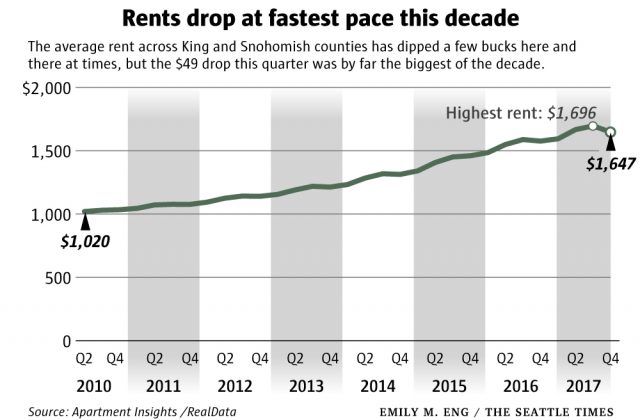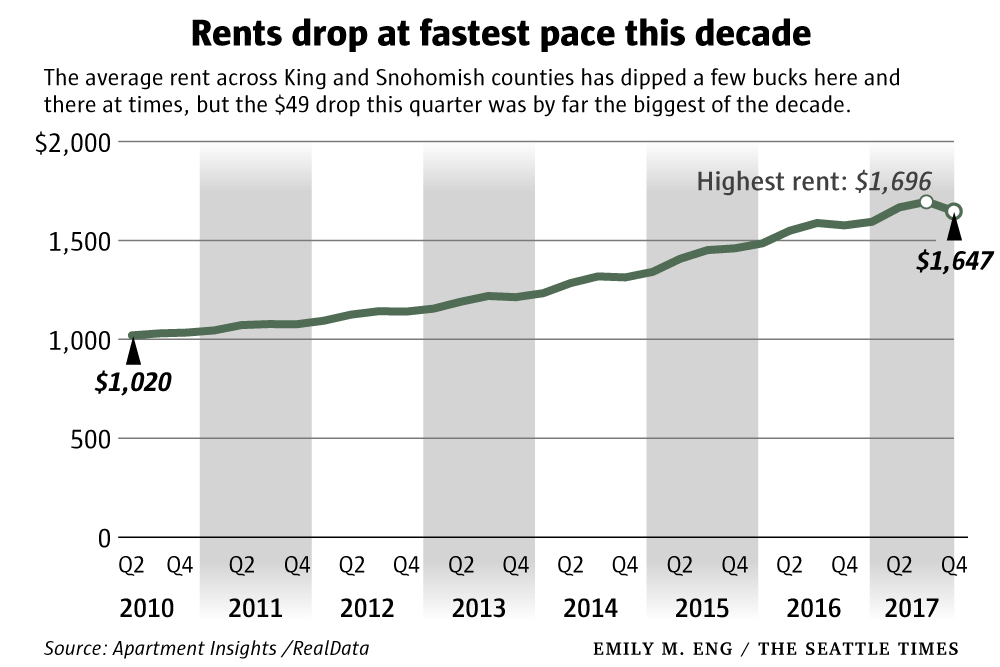Seattle Times Shocker: Supply and Demand Exists!
Here is the headline from a Seattle Times story last week: Seattle Area Rents Drop Significantly….
Wait. Is this the real Seattle Times? The one that consistently heralds the latest increase in average rents as “skyrocketing?”
At first I thought this was clever satire. Had the Seattle Times hired deconstructionist performance artist Charles Mudede to write for their real estate section? Would there be some gotcha communist joke in the text.
Rents are dropping significantly across the Seattle area for the first time this decade, as a flood of new construction has left apartments sitting empty in Seattle’s hottest neighborhoods.
and
The biggest rent decreases were mostly in the popular Seattle neighborhoods that are getting the most new apartments. Rents dipped more than 6 percent compared with the prior quarter in First Hill, downtown Seattle, Belltown, South Lake Union and Ballard, along with Redmond and the Sammamish/Issaquah area.
What?! Insert wow emoji here. They even have a chart!
I’m being very snarky of course. The Seattle Times does the same thing here that it always does: report averages without much analysis about the “why” behind the numbers. But for once, Mike “Sky Rocket Man” Rosenberg quotes an actual developer, Greg Smith, about his perspective on this.
“New projects don’t make sense — they don’t pencil” out, Smith said. “Most banks are aware of that now and are very, very cautious about the amount of debt they’ll put on a property. There’s definitely a change that has occurred. Some fellow developers are stepping back and saying, ‘I’m not developing now.’ ”
This thing that Rosenberg is seeing in his averages is what the media around here considers sort of the Loch Ness Monster: the effects of supply and demand.
Now this does not mean the hyperventilating headlines will stop. In fact, already in social media the supply deniers are coming up with all sorts of excuses about why this doesn’t matter. Also, the danger is the the City Council will say, “See, our production killing regulations aren’t hurting a thing! It’s business as usual!”
I take this data as encouraging and the reporting as satisfying. But overall, my reaction is the same as when Rosenberg writes about the average price of units “skyrocketing” and being out of reach to the average worker; I take it with a grain of salt. While money for bigger projects like the ones Greg Smith builds might be slowing down, there is still a lot of demand out there for all sorts of housing, and the regulations that City Council is considering, like imposing pointless bike parking requirements for car parking exempt projects, are still cramping supply.
The message of this article is really that concern is growing among some developers and banks that we may be hitting the peak. As I always point out, real estate development is not a casino; money is very conservative and expects solid data and results before committing. But the slight downward trend here is an indication that when more supply becomes available prices do go down. The Earth really does revolve around the Sun!



